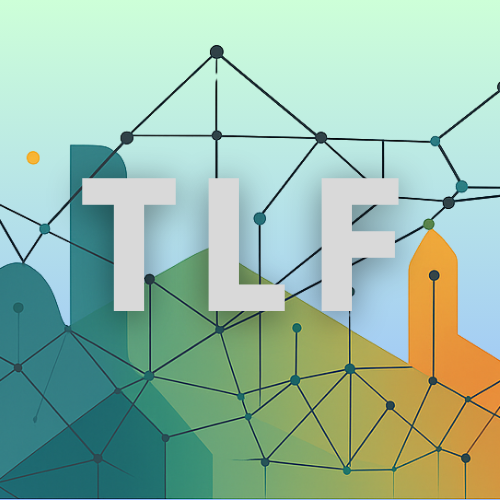
Your Monday Morning Action Plan
You've seen the evidence (trust beats control) and found the hidden leaders in your organization. Now what? Here's your practical playbook that actually works - no rigid frameworks, just smart experiments with the people who can make change happen.
Your 5-Step Roadmap:
🎯 Step 1: Find your spark - What problem keeps you up at night?
📊 Step 2: Reality check - Coffee conversations with informal leaders
🧪 Step 3: Design experiments together - Start tiny, time-boxed, voluntary
📈 Step 4: Make success visible - Progress tracking that motivates
🚀 Step 5: Let success pull - Organic spread beats mandates
The Magic Formula: Small experiment + informal leader support + visible results = organic spread
Your 8-Week Timeline:
Weeks 1-2: Get clear and listen
Weeks 3-4: Co-create your first experiment
Weeks 5-6: Run it (celebrate small wins publicly)
Weeks 7-8: Let success spread naturally
Transcript
So you’ve seen the evidence - trust beats control. You’ve discovered the hidden leaders in your organization. And now you’re thinking…
“Okay Stefan, but what do I actually DO on Monday morning?”
Well, I’ve got good news and better news.
The good news? There IS a practical playbook. The better news? It actually works.
But fair warning - this isn’t about implementing some rigid framework. It’s about running smart experiments with the people who can actually make change happen. Remember those informal leaders from the last video? They’re about to become your secret weapons.
[TITLE CARD: Your Monday Morning Action Plan]
First, Let’s Address the Elephant
I can hear some of you already:
“This sounds like another management fad.” “We’re different.” “That won’t work here because… –insert special snowflake reason–”
I love these! You know why? Because skepticism is healthy. You SHOULD question new approaches.
So let me be clear about what this is and isn’t:
This isn’t a fad - it’s based on 30+ years of research. The military calls it “mission command.” Researchers call it “participative leadership.” I call it “working with human nature instead of against it.”
But here’s the key: We’re not implementing a framework. We’re running experiments based on principles. Big difference.
Your 5-Step Journey (Starting Now)
Here’s your roadmap:
- Step 1: CLARITY - Find your own “why”
- Step 2: REALITY CHECK - Map what’s actually happening
- Step 3: EXPERIMENT - Start tiny with your informal leaders
- Step 4: VISIBILITY - Make progress impossible to miss
- Step 5: SCALE - Let success spread naturally
Notice what’s different? We’re starting with YOUR purpose and working WITH your hidden leaders from day one. This isn’t top-down or bottom-up - it’s inside-out.
Step 1: Find Your Own Spark
Before you can inspire anyone else, you need to be clear on why YOU care. And please, don’t give me the corporate answer. I mean the real answer.
What problem keeps you up at night? What would make you proud in 10 years? What change would make you excited for Monday mornings?
Here’s a tip: Think about the last time you got genuinely angry at work. Not annoyed - angry. What was being violated? That’s usually a clue to what you really care about.
For me? It was watching brilliant people waste their potential on stupid processes. Drove me crazy. Still does.
Find your version of that.
Step 2: Map Your Reality (With Help)
Remember those informal leaders you identified in the last video? Time to have coffee with them. But not to recruit them - to learn from them.
Ask three questions: For example:
- “What’s really working well here?”
- or – “What drives you crazy?”
- or – “If you could change one thing, what would it be?”
Then: Listen very carefully!
These conversations will teach you more about your organization than any survey or consultant report. Plus, you’re building relationships with the people who actually make things happen.
Step 3: Design Your First Experiment (Together)
Here’s where it gets fun. Pick ONE problem that came up repeatedly in your conversations. Something specific, measurable, and solvable within your sphere of influence.
Now - and this is crucial - design the experiment WITH one or two of your informal leaders. Not for them. WITH them.
Maybe it’s:
- “What if we tried stand-up meetings for just this one project?”
- “What if we made our backlog visible to everyone?”
- “What if we let the team own their own metrics?”
Keep it small. Keep it time-boxed. Keep it voluntary.
“Two-week experiment” is magic language. People will try almost anything for just two weeks.
Step 4: Make Success Visible
Here’s something I learned the hard way: Invisible progress might as well not exist.
Create a simple, visible way to track your experiment:
- A whiteboard with before/after metrics
- A shared dashboard everyone can see
- Even just a weekly email with results
Here’s something wild about humans - we’re wired to keep score. When people see their own progress, something primal kicks in. It’s like a fitness tracker for work. Suddenly everyone wants to beat yesterday’s number.
But here’s the key - let the TEAM decide what to measure. When people choose their own metrics, they own the results.
And when that informal leader who everyone trusts is excited about the improving numbers? That’s when magic happens.
Step 5: Let Success Pull (Don’t Push)
When your experiment works - and if you’ve involved the right people, it will - resist the urge to immediately roll it out everywhere.
Instead, let other teams get curious. Let them ask questions. Let your informal leaders share their experience at lunch.
When people ASK to copy your experiment, you’ve already won. When it’s mandated from above, you’re just creating more resistance.
Real Examples That Worked
Let me share some real examples of small experiments that created big changes:
Content creation bottleneck: A cross-functional team volunteered to tackle a backlog of training materials that had been stuck for years. Previous attempts had stalled repeatedly. The breakthrough? They made all the work visible - what stage each piece was in, who was handling what. Bottlenecks became obvious, and the team was finally able to solving them. Result? They cleared the backlog and established a sustainable production rhythm.
Reliability turnaround: Instead of dictating solutions to struggling production teams, leadership gave them clear targets and let teams design their own improvement approaches. One of the consistently underperforming units jumped to near the top of reliability rankings. The key difference? Teams owned both the metrics and the methods.
The factured team: A team managing diverse projects was technically collaborating but felt disconnected. Meetings dragged, updates felt mechanical. Then a new team member - who quickly became an informal leader - took it upon herself to find the commonalities between their work. That became the tipping point. This helped the team discover shared goals across their different work streams. The shift was dramatic: from a collection of individuals into a cohesive unit.
Notice the pattern? Small experiment + informal leader support + visible results = organic spread.
Building on What Works
Now, some of you might be thinking, “This sounds like John Kotter’s change model!” And you’d be partially right. Kotter’s brilliant about the importance of coalitions and short-term wins.
But here’s the key difference: Kotter’s writing for CEOs planning massive transformations. We’re talking about starting where you are, with what you have, working with informal leaders who already have influence.
Think of it as Kotter’s principles meets grassroots reality. Same wisdom, different starting point.
Your Week-by-Week Roadmap
Week 1-2: Get clear and get listening
- Find your personal why
- Have coffee with 3-5 informal leaders
- Listen more than you talk
Week 3-4: Design your first experiment
- Pick one specific problem
- Co-create solution with informal leaders
- Set clear success metrics (that they choose)
Week 5-6: Run the experiment
- Keep it small and voluntary
- Track results visibly
- Celebrate small wins publicly
Week 7-8: Let success spread
- Share results, not mandates
- Support teams who want to try
- Learn from the teams that don’t
- Find out what doesn’t work and design an experiment to fix it.
Eight weeks. That’s it. Two months to start changing your organization’s trajectory.
Here’s some Common Traps (And How to Avoid Them)
The “Go Big” Trap: Getting so excited you try to change everything. Solution: One experiment. One team. Prove it works first.
The “Solo Hero” Trap: Trying to do it all yourself. Solution: Informal leaders are your multiplier. Use them.
The “Perfect Plan” Trap: Over-planning instead of trying. Solution: 70% ready is enough. You’ll learn by doing.
The “Declare Victory” Trap: One success and you think you’re done. Solution: Change is a practice, not a project.
But What About Resistance?
“Stefan, this sounds great, but what about Bob from accounting who hates all change?”
Here’s the beautiful thing about working with informal leaders - they handle the Bobs for you. When Bob’s trusted colleague is excited about something, Bob listens differently than when “management” announces another initiative.
Plus, voluntary experiments mean Bob can watch from the sidelines. When he sees it working, he’ll often ask to join. I’ve seen it happen dozens of times.
Skeptics often become your biggest champions - once they see real results.
The Agile Elephant in the Room
Now, some of you are thinking, “This sounds like agile! We tried that and it didn’t work.”
Ah, yes. Agile. The methodology that was supposed to save us all. Daily standups, sprint planning, retrospectives, story points…
But what if I told you that what most companies call “agile” is exactly the opposite of what agile was meant to be? What if the very thing designed to unleash human potential got turned into another cage!
That’s what we’re diving into next time. Why methodologies fail, principles succeed, and how to avoid turning your beautiful experiments into rigid doctrine.
Your Call to Action
Remember where we started? The evidence is clear - trust beats control. You’ve found your informal leaders. Now you have a practical plan.
The only question left is: Will you actually do it?
Because here’s what I know - somewhere in your organization right now, someone has a brilliant idea. Someone sees a better way. Someone wants to make things better but doesn’t know if anyone will listen.
What if you were the leader who listened? Who experimented? Who made Monday mornings something to look forward to?
You don’t need permission. You don’t need a budget. You don’t need a title.
You need clarity about what matters. You need to work with your informal leaders. You need one small win to build on.
That’s how revolutions begin. Not with grand proclamations, but with someone saying “hey, what if we tried this?”
This is The Liberty Framework. Now go build something better.
Let’s make it happen!
